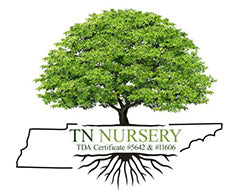











Perennials, Unlike Annuals, Lives For Decades
Unlike annuals, which only live for one growing season, Perennial plants have a long life span, some over ten years. Plus, they reseed themselves, making new plants for many more years. There are several advantages to planting them in your garden:
- Cost-effective: Although they may be more expensive to purchase initially, they are cost-effective in the long run because they do not need to be replanted yearly.
- Low-maintenance: They require less maintenance than annuals, as they do not need to be planted and cared for every year. Once established, they will grow and bloom year after year with minimal attention.
- Drought-tolerant: Many are adapted to survive dry conditions, making them a good choice for gardeners in areas with limited rainfall or for those who want to conserve water.
- Biodiversity: They can support insects, birds, and other wildlife. This can create a more diverse and balanced ecosystem in your garden.
- Soil health: They have deep roots that help to improve soil structure and promote healthy soil biology. This can help to improve the health of your garden over time.
- Extended blooming: Many have a longer blooming period than annuals, providing a longer-lasting display of color and beauty in your garden.
Perennial Plants Enhance The Soil and Add Needed Nutrients As Well
Perennials can be a great addition to any garden, providing beauty, biodiversity, and environmental benefits.
Virginia Bluebells
Virginia Bluebells (Mertensia virginica) are native to eastern North America and typically bloom in the spring with clusters of pink buds that reveal beautiful blue bell-shaped flowers. Virginia Bluebells prefer moist, well-drained soil and partial shade to full sun, but they can tolerate various soil types and growing conditions. They are hardy, which means they return for many years each spring with proper care.
Purple Coneflowers
Purple coneflower plants, or Echinacea purpurea, are perennial plants native to central and eastern North America. They are popular garden ornamental plants in traditional herbal medicine for their purported immune-boosting and anti-inflammatory properties.
Lily Of The Valley Perennial
Lily of the Valley Perennial, Convallaria majalis) is a perennial plant, meaning it will come back year after year. It is a hardy plant that grows well in shaded areas and has fragrant bell-shaped flowers that bloom in the spring. Lily of the Valley plants can spread quickly and form dense clumps over time. They prefer moist soil and can be propagated by division.

